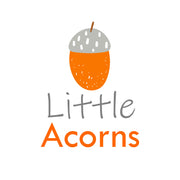Supporting speech and language through nature play
Thank you Amal, Specialist Speech and Language Therapist @playcubs
You can help your child expand their speech and language skills as they explore new green areas, hunt for insects and mini beasts and learn about the changing weather and seasons.
At playcubs, we’re all about planning simple activities to help support your child’s speech and language development. Here’s our top 5 nature-based activities:
Activity 1:
Go for a nature walk and talk about what you see, touch, smell and hear around you e.g Can you hear a plane? Can you describe what the leaves feel like? What does a flower smell like?
Tips
1. Point to the things you see and label them ‘flower’.
2. Expand what your child says to help develop their expressive (spoken) language skills e.g if your child says ‘bird’, you say ‘yes, the bird is flying’.
-
Activity 2:
Play a game of I-Spy but rather than saying the first letter of the thing you see, try saying the first sound e.g I spy with my little eye something beginning with a ‘buh’ (b) e.g a bee, bird or butterfly. For this activity, we made some binoculars by taping two toilet roll tubes, together and a piece of string.
Tips
1. Play a guessing game where you have to describe what you see e.g I spy with my little eye something tall and green (e.g a tree).
2. Practise working on answering wh-questions (who, what, where) and location words e.g Can you describe where the bird is? The bird is on the tree.
-
Activity 3:
Go on a scavenger hunt. Before you leave home, make a list of things you want to find on your walk e.g a stick, rocks, leaves etc.
Tips
1. Practise following directions e.g ‘Find a leaf and a rock’.
2. Teach your child about categories by asking them to find a group of things e.g Can you find 3 minibeasts? Can you find 2 things which fly?
-
Activity 4:
Make a sensory tray using the things you find on your nature walk. Grab a tray, add your treasures e.g flowers, leaves, twigs and some water. Have fun exploring the tray. You could also freeze flowers or leaves with water in an ice cube tray for a different sensory experience. Use tools such a water spray bottle, a pippete or toy hammer to melt or break the ice.
Tips
1. Practise asking for ‘more’ before putting another item into the tray. Your child may look at you, reach, make a sound/word/sign to show that they want more.
2. Make predictions e.g What will happen if we drop the ice in warm water?
-
Activity 5:
Make a sensory bottle or bag with the things you find on your nature walk. This is a great activity for younger children who may be mouthing things around them. Simply grab an empty bottle or empty ziplock bag and fill with your natural materials and some water.
Tips
1. Create opportunities to develop your child’s language skills by giving your child a choice of what to put in the bottle/bag e.g ‘flowers or leaves?’ while holding up the items.
2. Play Simon Says to help your child to learn different action words e.g ‘Simon says SHAKE the bottle’. ‘Simon says PAT the bag.’
Happy exploring!

